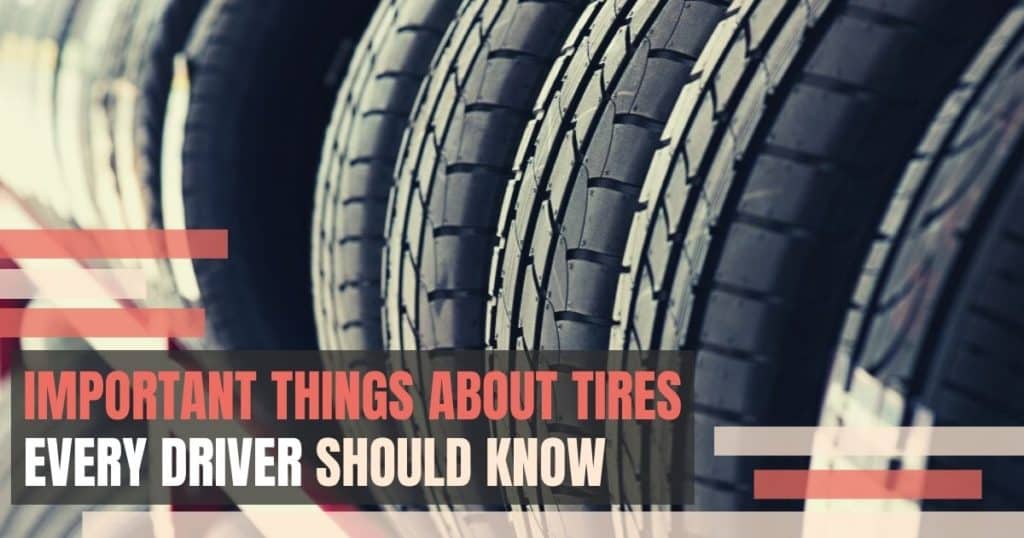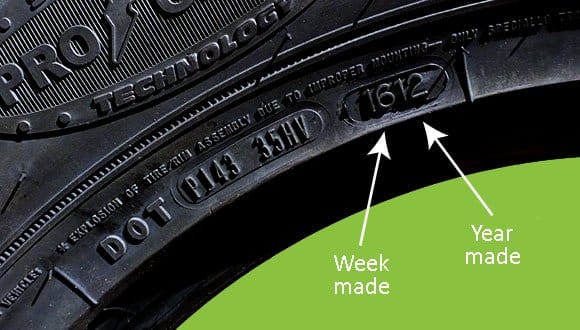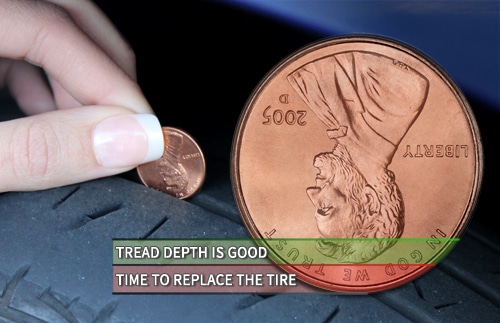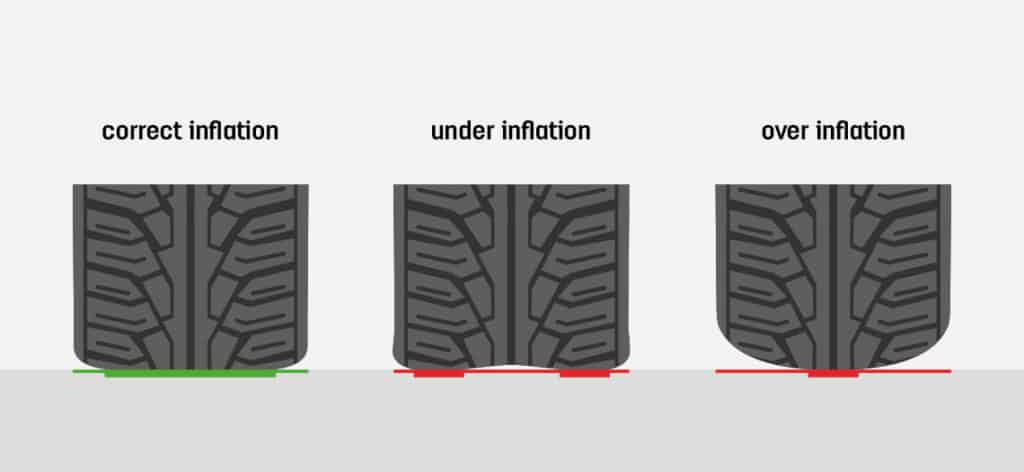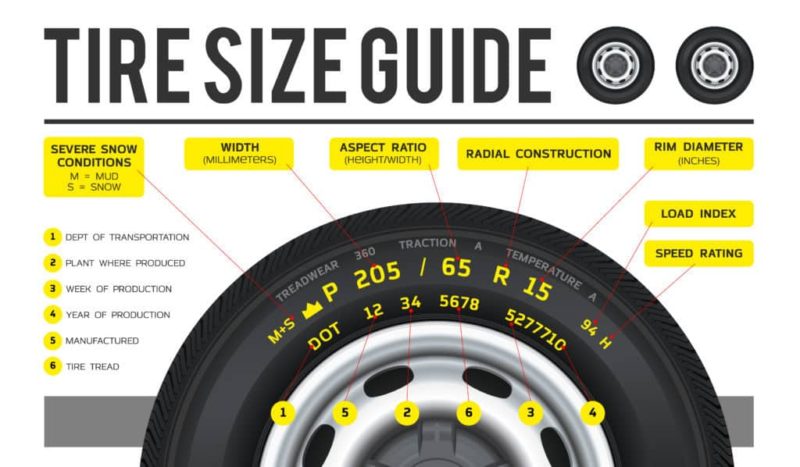You may not realize it, but tires are the most important safety feature on your vehicle. They are the only part in direct contact with the road. They also play a part in every major function such as stopping, accelerating, and turning. As important as they are, the common driver doesn’t no much about specifications, tread pattern or wear or even the proper maintenance schedule. So today we will discuss the most important things to know about tires.
I will discuss high level components, technology, and how to choose the best tires to meet your needs.
Important Things About Tires Every Driver Should Know
1. The Right Tire for The Right Season
Tires are designed and engineered for specific weather conditions. There are summer, winter, and all season tires. While you may not think there is much of a difference, there is. If you put a summer tire next to a winter tire, they look almost exactly alike to the average consumer. However the tread is different and the rubber compound is different.
Summer Tires vs Winter Tires vs All Season Tires
Characteristics of Summer Tires: Summer tires use a harder rubber compound. This is to help manage the heat created by both the weather, the heat from the road, and the heat generated through friction. With a harder compound designed to manage heat, you get better gas mileage, less wear and tear, and less noise from the road. The tread pattern is designed to handle both warm weather as well as rain.
Characteristics of Winter Tires: Winter tires feature a softer rubber compound designed for cold temperatures. These tires get harder as the temperature gets colder. They have a deeper tread pattern designed for improved traction, and stability on snow and ice. While these tires aren’t as efficient for fuel economy, road noise, and tread life, they can e the difference between making it home safe or calling for a tow truck.
If you don’t think there is much of a difference then you have never driven on summer tires in the winter! Once the weather drops below 44 degrees traction reduces and braking distances become longer.
All season Tires: All season tires are made to be a hybrid like a best of both worlds. They are constructed of a compound that stays flexible at temperatures just above freezing, to maintain traction. The tread is deeper then a summer tire, but not as deep as a winter tire. There is more voids and variations in the pattern to assist with grip in the occasional bought with snow.
The best course of action is having a set of summer tires and winter tires. Never one of the other though. If you can’t afford to maintain and switch out two sets, then consider all season.
2. The Tires Born on Date
This is actually called the Date of Tire (DOT). This is one of the most important things we talk about as well as treadwear.
First let’s discuss how to find the DOT on the sidewall:
On the sidewall of a tire, there is an oval shape containing the letters DOT. It will be near the bead and the rims edge. Next to DOT there will be 4 numbers. Those numbers represent the week and the year the tire was manufactured. So if you see DOT 1820, the tire was produced in week 18 of the year 2020.
Why Is this Important:
Even when you buy “new tires” they are not actually new. Meaning they weren’t manufactured yesterday. They are unused, but not new and there is an important reason why you need to understand that distinction. Tires contain chemicals that begin to break down after six years, the rubber begins to become unstable. This includes issues like dry rot which is when the rubber begins to crack. The National Highway Traffic and Safety Administration (NHTSA), recommends never buying a tire older then 6 years and never using a tire older then 10 years.
So when you go and buy a new tire, that tire is actually already probably a year old. Never let them sell you a new tire that is older then one year. It is in there best interest to sell you an older tire, don’t let them do it. Now that you know you can make sure you get a tire produced within a one year period. So with that being said, even a tire that has never been driven on that is older then six years is not safe. That is important to know because some of these tires end up at used tire shops.
3. Monitoring Your Tread Wear
Your tire tread wears down as a result of mileage, over or under inflation, and your style of driving. Frequently examining your tread is important because the more shallow it is the more your stopping distance oncreases. If you notice uneven treadwear it’s a sign that you may need some routine maintenance. This could include a rotation, suspension alignment, or tire balancing.
There are various ways to monitor the tread depth on your tires. There are tread depth tools that cost a few bucks, but you can also use the penny method. This is where you stick a penny in your tread and if the tread don’t reach Lincoln’s head then you need to replace your tires.
While the penny test isn’t going to give you a precise measurement like a tool would anything from 11/32“ to 6/32“ tread depth is acceptable. Anything less and you need new tires. Lower tread depth means less traction, longer braking distances, less handling, and increased hydroplaning.
4. Monitoring Your Tire Pressure
Keeping the tire pressure at the vehicle manufacturers recommended level is also important. A properly inflated tire lasts longer and is safer to drive on. Tire pressure is measured in PSI which stands for Pounds Per Square Inch.
Under Inflation: When the PSI is too low braking distances increase and you get less responsive steering and handling. Low pressure also causes the side wall to flex more which causes more heat. Heat reduces tread wear and enough heat causes a blowout. Under inflation also leads to poor gas mileage and replacing your tires more frequently.
Over Inflation: Isn’t as dangerous as under inflation. The trouble though is consistent over inflation causes uneven tread wear in the middle of the tread and leads to you having to replace the tires sooner.
Some vehicles may have different PSI recommendations for the front and rear of the vehicle. You can find your recommended PSI for your vehicle in the owners manual, the drivers side door jam sticker, and the internet. You should always use the vehicle manufacturer’s recommended PSI and not PSI listed on the sidewall. When you check your PSI you need to make sure the tire is cool. Warm tires give inaccurate readings.
If you have a tire that keeps losing air, you can add air, but there may be a bigger underlying problem.
5. Choosing The Right Tire
When putting a tire on your vehicle it must meet the minimum requirements for your vehicle. It also needs to be the same size and meet the same load capacity as he other tires you are using. There are 3 places you can find the minimum requirements for your tires: the owners manual, the drivers side door jam sticker, and the internet.
It is highly recommended that all your tires be not just the same size, but the same brand and model. That will result in the safest and best performance. If you don’t have a matched set of four, try and go for two sets of two with a match in the front and a match in the back. If you have to replace just one tire try and find a brand with a similar tread. You can sacrifice on brand and model, but never on size and load.
You may have seen different tires being advertised as performance or fuel economy. This has to do with your driving style. If you drive aggressively consider a performance tire. If you feel like a more conservative driver choose a higher mileage tire that offers better fuel economy.
When it comes to tire, I don;t recommend going cheap. The top brands are expensive, but have better technology because they have larger budgets for research and development.
6. How Much Mileage Will I Get?
There are a lot of factors that impact a tires life span. It isn’t just road wear either; weather, tire age, and your driving style can dramatically impact the estimated total mileage. Most people drive a personal vehicle between 12,000 and 15,000 miles a year. If that is about what you drive, you should expect the tire to last 3 to 4 years on average. If you drive more aggressively then they will wear faster and you will need to replace them sooner.
7. Where to Buy Tires?
These days there are so many places to buy tires. You have options for new and used tires and many places who sell both. While new tires are the safest and most reliable option premium brands are super expensive and you can find them second hand with more the 65% of the tread wear remaining.
There are many places that sell tires like Discount tire, Costco, and Walmart, that not only, sell but also install and mount them. You can also order tires online, but then you need to find a place to have them installed and mounted.
How to Save on Tires
Most places offer discounts if you bundle your tires and services. For example you might find one tire is $100, but if you purchase 4 tires they are $350. Another way to save is you may get an additional discount if you have the place install and mount them for you. When you pay for the additional service they may take a percentage off the tires as well.
Getting Smart About Tires
Knowing the basics around tire types, Age, date, treadwear, PSI, and tire size can make you a safer driver. Evn better you will save money on gas and tire replacements. How long your tires will last though often comes down to your driving habits and terrain. Following are guidance above you can be much more informed about tires and how to maintain them.
